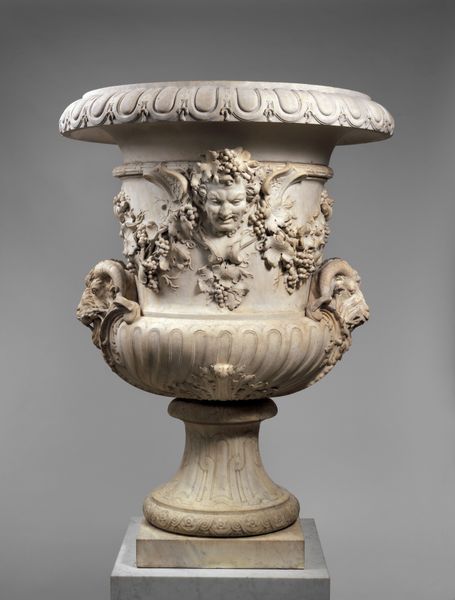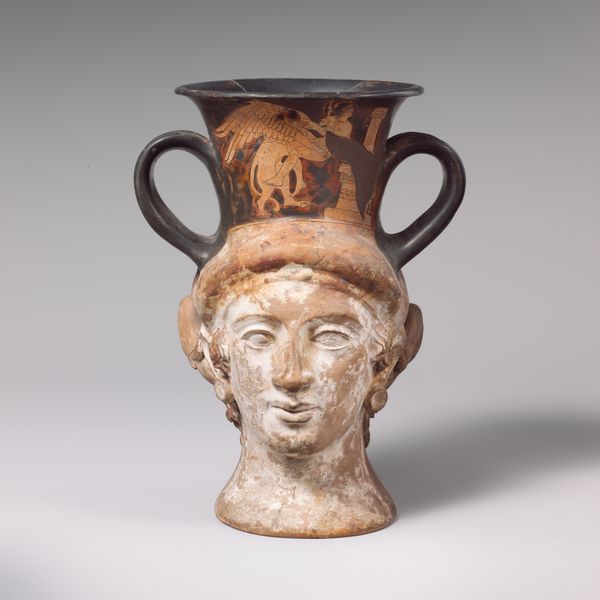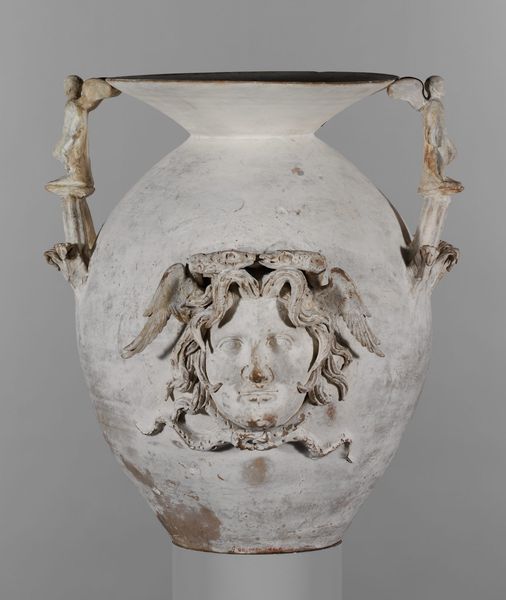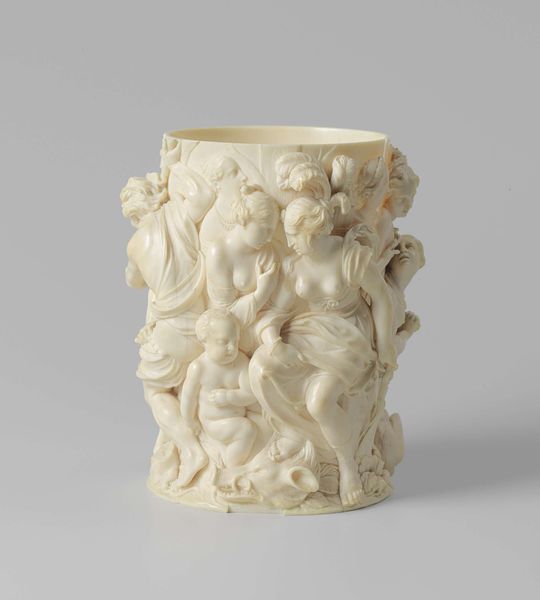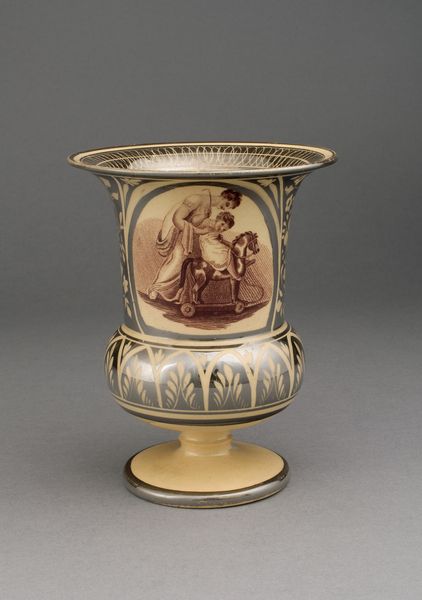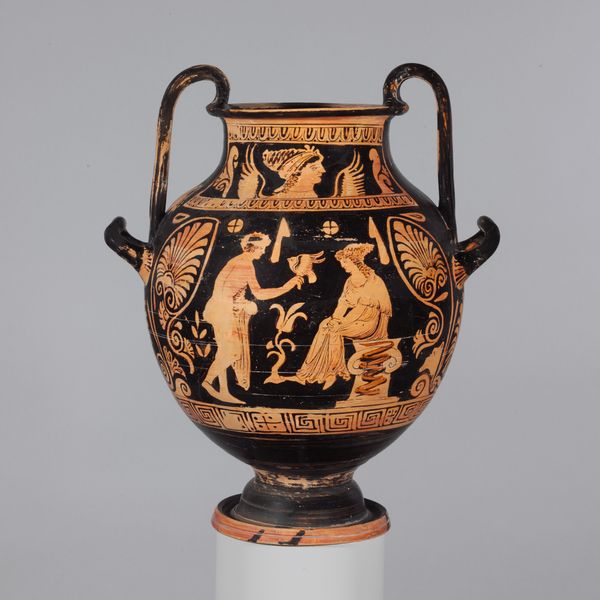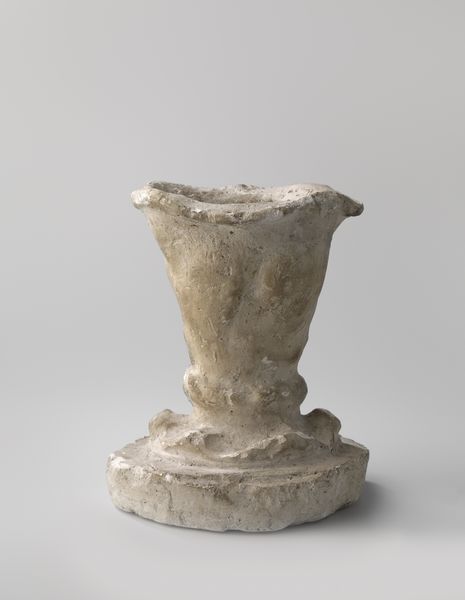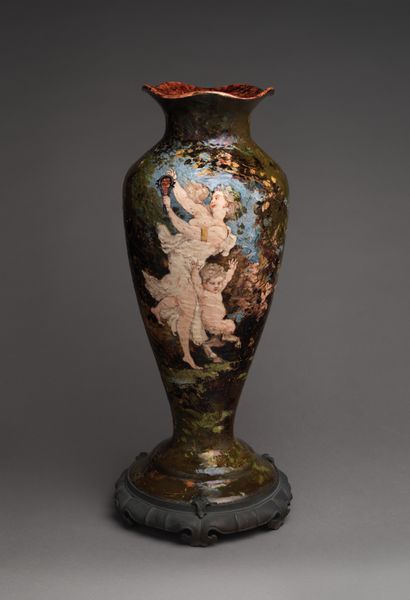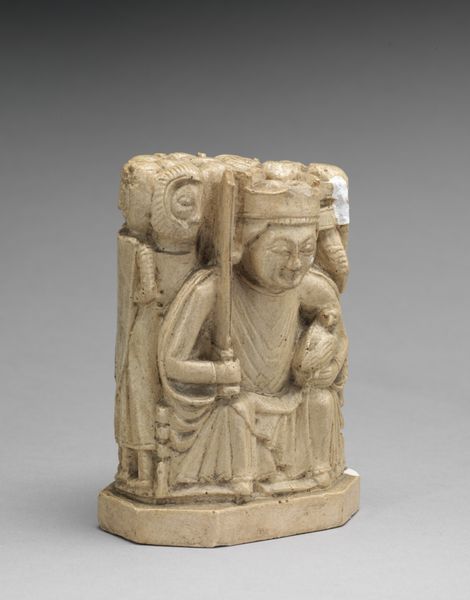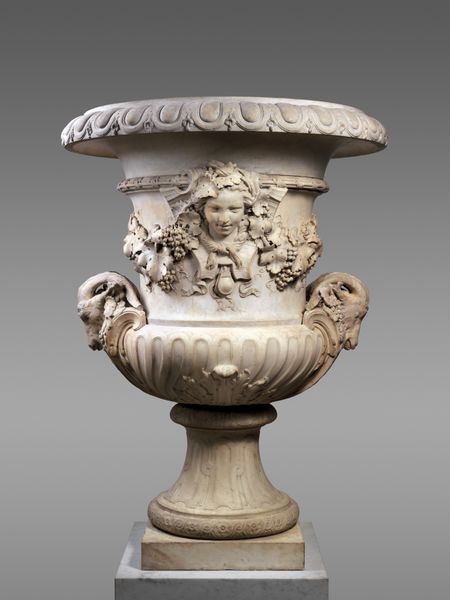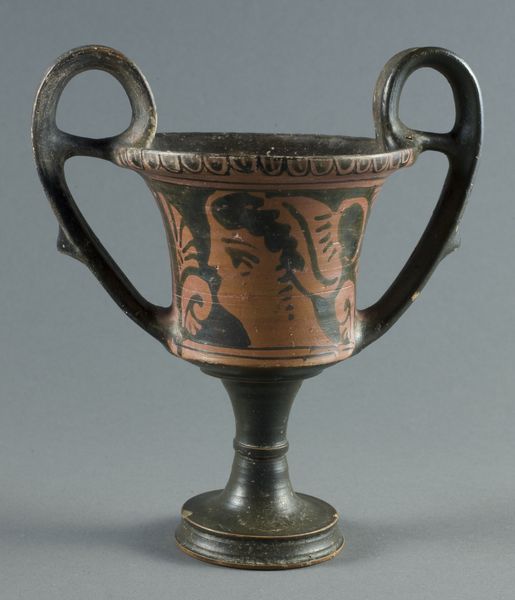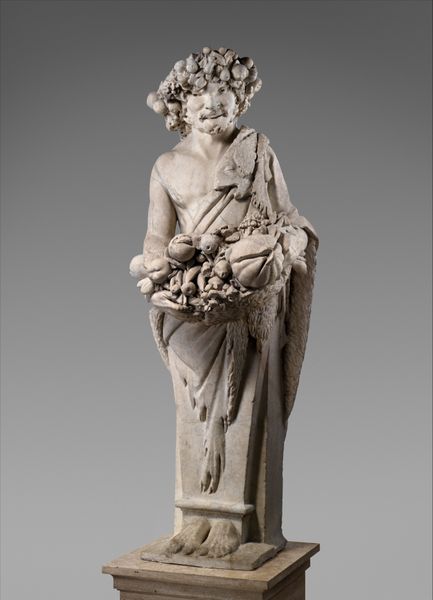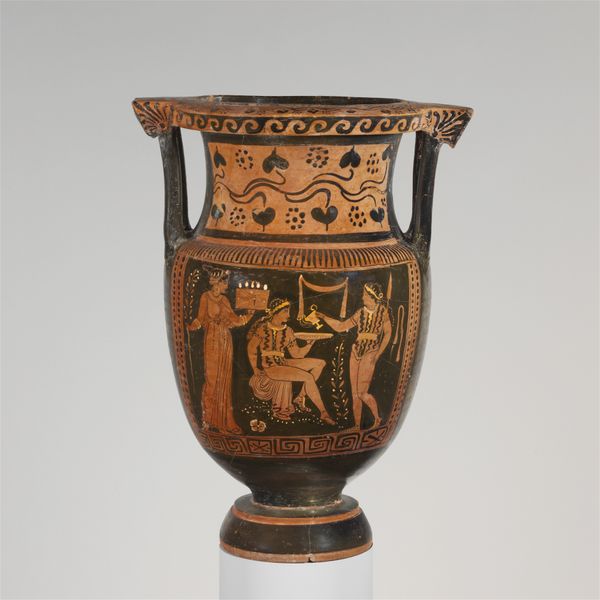
carving, relief, sculpture
#
medieval
#
carving
#
stone
#
sculpture
#
relief
#
figuration
#
romanesque
#
sculpting
#
sculpture
#
arch
#
vertical object
#
men
Dimensions: Overall: 9 1/2 x 4 1/2 x 15 in. (24.1 x 11.4 x 38.1 cm)
Copyright: Public Domain
Editor: We’re looking at a Holy-water Font, made between 1157 and 1168 by an artist known as Guglielmus. It's a stone carving currently housed at the Met. I’m struck by how the figures seem both weighty and delicate, all in this compact, almost squat form. How do you approach interpreting something like this? Curator: From a formalist perspective, observe first the material and its treatment. The stone, likely marble, is meticulously carved in relief, showcasing the artist’s skill in manipulating light and shadow to define the figures and create depth. The cylindrical shape is adorned with these figural narratives. Consider how the artist utilizes line and volume within a circumscribed space. Do you notice the compression of figures within the available area? Editor: Yes, the figures are definitely fitted into a tight space. Almost like they are bulging a bit at the corners. I'm interested in the shapes of the figures. Are they standard conventions of Romanesque sculpture? Curator: Precisely. The stylization, the almost geometric treatment of drapery, and the expressiveness achieved through simplified forms are quintessential Romanesque. Consider the deliberate distortion and exaggeration, not as flaws, but as tools for emphasizing spiritual significance and narrative clarity. The formal elements—line, shape, and volume—serve to convey deeper meaning. Do you notice how the faces carry little emotion, instead the story relies on the angles of their bodies? Editor: It is fascinating to focus just on the visual strategies instead of thinking about all the religious context. Curator: By analyzing the internal structure of the artwork, we reveal how visual language functions to create meaning and communicate within its own framework. Every curve and contour plays its part in a sophisticated interplay. Editor: So, it's about the relationships between shapes and forms rather than the story being told. Thanks, that’s really broadened my perspective.
Comments
No comments
Be the first to comment and join the conversation on the ultimate creative platform.
